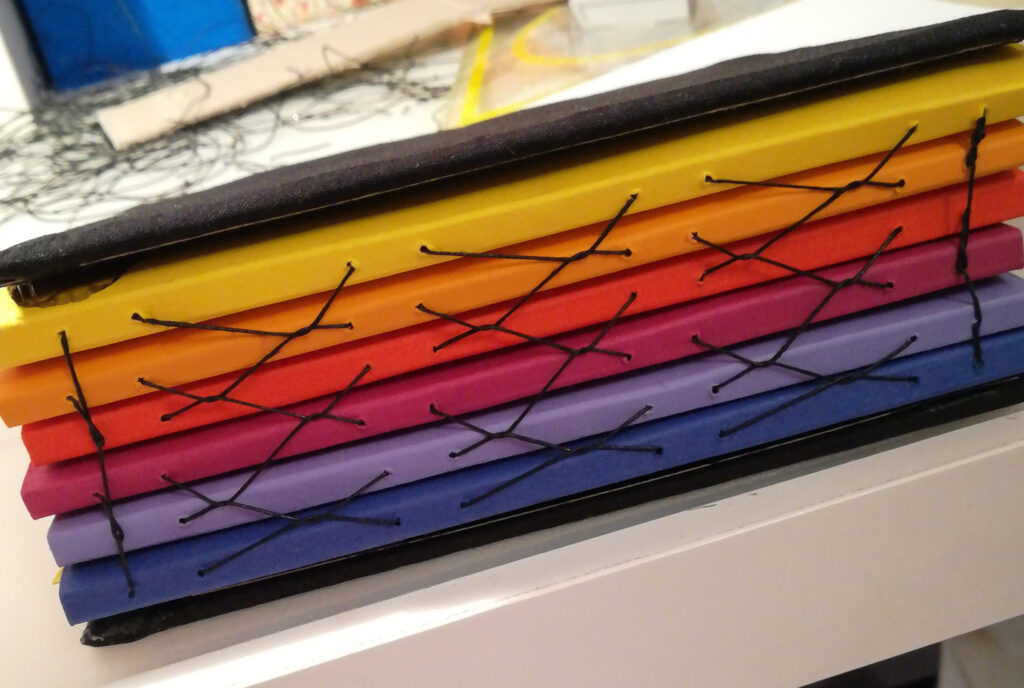For my first experiment, I decided to combine two different bookbinding methods: the French link stitch on the outside and single sheet binding on the inside.
The booklet is made up of all kinds of old paper – from magazines, advertisings, newspapers and many other things. Since all of the material was of rather small size, I could not fold it in half for a traditional bookbinding method, but decided to try a method for single sheets. I divided all of my sheets into six bundles and then punched six holes through all of them. Then I bound together six bundles of paper with black bookbinding thread.
Since I wanted to create a colorful spine, I then continued my experiment by preparing a small piece of cardboard in rainbow colors for each bundle (as seen in the picture). I made two creases, so the paper could be folded easily around the paper bundle and punched eight holes through the center of the cardboard. Then I proceeded to glue the cardboards onto the first and last page of each bundle.
To bind the bundles together, I then used the French link stitch. The last step was to glue a front and back cover (a thick cardboard covered in black fabric) onto the booklet.
Concluding, the first experiment can be considered a success. There were some issues with the single sheet binding, since some of the papers were quite thin and the thread therefore ripped the paper a few times. This could be improved by first adding a strip of scotch tape to the edge of each sheet for stability – for this project I decided to skip this step, due to the huge amount of sheets that I needed to bind. Surprisingly, adding the cardboards to each bundle and binding them together with a French link stitch worked out just as I intended. Prior to my experiment I couldn’t find any other projects like mine, so I wasn’t quite sure if my idea could work in reality. The end product is a little wobbly, but the thread seems to hold up well.
